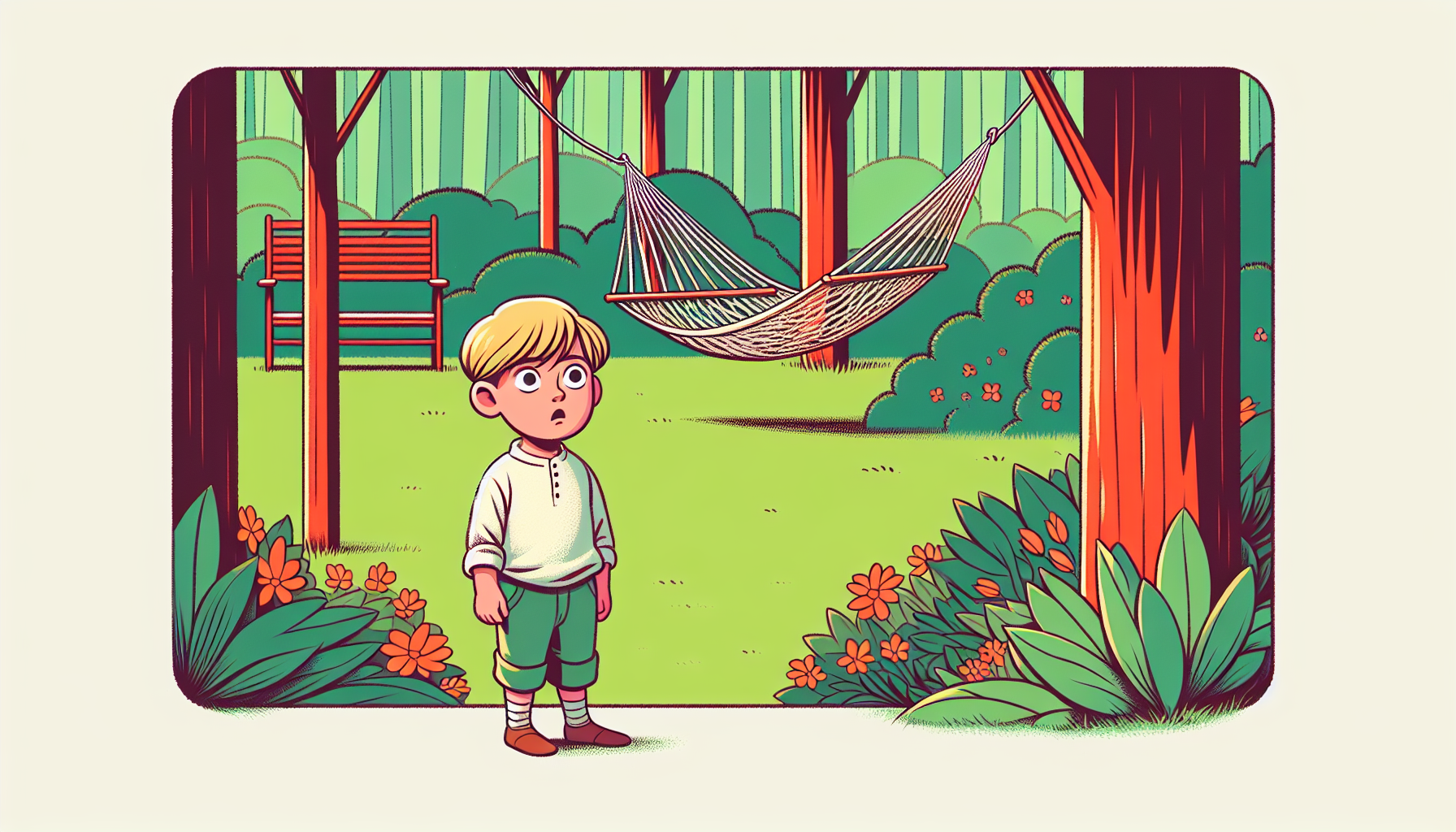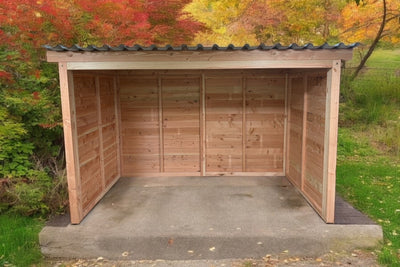Hang up your hammock safely in the Swiss garden and relax and enjoy
A hammock in your own garden is a piece of vacation atmosphere at home - whether as a retreat after a hard day or as a meeting place for fun and games with the family. To ensure that it provides long-lasting enjoyment and does not become a source of danger, it is essential that it is securely suspended. Many questions arise, especially in Swiss gardens with limited space or small children: Which space is suitable? How weatherproof do materials need to be? And what needs to be taken into account so that children can play safely?
In this guide, you will find practical tips on how to install your hammock safely and permanently in the garden. From the choice of location and suitable materials to child safety - ideal for garden owners in Switzerland who want to enjoy a relaxing little break in the countryside.
Hanging a hammock safely in the garden: What does it take?

Before you install a hammock, it's worth checking your garden for space and safety. Not every plot automatically offers suitable conditions. The following applies to children in particular: good planning prevents dangers later on.
Plan enough space for hammocks
Standard hammocks require about 3 to 4 meters of space between the attachment points. There should be at least 1 metre around the sides and around 80 centimetres to the ground to minimize the risk of falls.
Two strong trees with suitable spacing are ideal. Alternatively, metal frames, pergolas or paved garden walls can be used as suspension points. Slopes, locations near play equipment or barbecue areas should be avoided.
Important safety factors in the Swiss garden
The area around the hammock makes a significant contribution to safety. Avoid hard surfaces such as concrete, gravel or stone. Soft surfaces such as grass, bark mulch or fall-proof surfaces like those found on Swiss playgrounds are ideal.
With children or several users, the structure should be able to bear a load of at least 150 kg. In the case of older trees or buildings, it is worth having them checked by a specialist. This is particularly important if the suspension system is to remain permanently installed or if structural work is required.
Which materials are suitable for a weatherproof hammock?
In Switzerland, the weather changes frequently - between strong sun, rain and cool nights well into the fall. For long-term use in the garden, you therefore need robust and weatherproof materials.
Durable fabrics and suspensions for outdoor use
Synthetic fabrics such as polyester or polypropylene are ideal. They dry quickly, are UV-resistant and resistant to mildew. Cotton is softer to the touch, but should only be used outdoors if impregnated - with regular care.
Stainless steel carabiners, weatherproof ropes or polyester straps and rust-proof metals are recommended for hanging. Larch, oak or robinia from certified sources are a good choice for wood - preferably with pressure impregnation or natural.
Pay attention to quality and sustainability
Swiss suppliers such as Tropilex or haengemattenglueck.ch offer certified hammocks with FSC-certified wood, OEKO-TEX® textiles or recycled fabrics. These products are designed to last and do not contain any harmful substances.
Quality pays off, especially when it comes to suspension systems: they are more resilient, better made and can be extended in some cases. A solidly built set saves costs in the long term and increases the safety of your garden installation.
How to install your hammock correctly and safely
Correct assembly determines the comfort and safety of your hammock. With a clear plan and suitable accessories, the hammock can be hung up without a great deal of previous knowledge.
Step-by-step instructions for stable attachment
- 1. measure the distance: allow 3 to 4 meters between stable suspension points.
- 2. determine the height: Depending on the length of the hammock, ideally 1.2 to 1.8 m suspension height.
- 3. prepare accessories: tensioning straps, weatherproof ropes, hooks, carabiners or frame.
- 4. carry out assembly: Attach to trees with handles, to walls with heavy-duty anchors and suitable dowels.
- 5. adjustment: The hammock should hang loosely, not be taut.
- 6. test load: Test with 20-30 kg before use, then tighten all fastenings.
Flexible suspension and regular checks
Special systems such as "TreeMount" or "CasaMount" from LA SIESTA offer flexible options for height adjustment and attachment to trunks of different thicknesses. Adjustable straps are particularly practical for changing shade conditions.
If you use hammock frames, you should check the screw connections regularly. Frames made of galvanized steel or aluminium with a powder coating are not only durable, but also mobile and winter-resistant - if they are stored in late autumn.
How can the hammock be made childproof - and suitable for everyday use?
For families with children, a hammock offers ideal retreat and play opportunities - but only if used correctly. Safety comes before comfort.
Tips for child safety in the garden
Hammocks are not play equipment and should not be used by children unsupervised. A soft cushion or fall protection mats under the mat significantly reduce the risk of injury. For younger children in particular, nets with edges or special children's models are recommended.
Keep a safe distance from hard objects, walls or furniture. The best place is away from busy paths or pet passages. Talking about correct use - for example, only swinging while seated - helps to prevent accidents.
Suitable models and a safe environment
Nest hammocks or swing-like models with a fixed frame are usually more suitable for lively children than a free-hanging canvas model. Firm anchoring also prevents tipping over or sagging.
Permanent hammock installations should be clearly labeled: Conditions of use, maximum weight and age recommendation prevent misunderstandings during play visits or family parties - a simple but effective precautionary measure.
Care of the hammock: how to keep it usable for a long time
In Switzerland, UV radiation, humidity and temperature changes are a real challenge for outdoor materials. If you look after your hammock regularly, you will be able to enjoy it for many years.
Wash, store and avoid minor damage
Cotton hammocks can be washed in the washing machine at 30 °C, synthetic mats can be cleaned with soapy water and a soft brush. Important: allow to air dry completely before reusing or storing.
In the fall, we recommend dry storage in a protected room - such as a cellar, garden shed or drying room. Check all metal parts for rust and ropes for material fatigue.
UV spray for textiles and regular oiling of wooden components increases weather resistance. Avoid overloading or attaching to untested supports. This will keep your equipment safe and attractive at the same time.
Estimate costs realistically
Good entry-level hammocks are available from around CHF 80. For high-quality, weatherproof models with adjustable suspension, you should budget CHF 120 to 180. Complete sets with frame cost CHF 200 to 400, depending on the material.
If you mount on existing trees or posts, you save on accessories. However, pay attention to tested load values, especially for frequent use by children. Swiss suppliers often offer fairly priced sets including guarantees and spare parts.
Conclusion: Install a hammock safely and relax with a good feeling
A hammock is a piece of relaxation in your own garden - whether for adults on the sun terrace or children playing in the partial shade. With high-quality material, careful installation and regular checks, it becomes a long-term garden lounger with the character of a favorite spot.
Take into account the needs of your family, the Swiss climate and the available space - then nothing will stand in the way of a relaxing break in the hammock. Start your garden project now and enjoy a swinging summer!
Frequently asked questions about the hammock in the Swiss garden
How weatherproof does my hammock need to be in Switzerland?
It should be UV-resistant and water-repellent. Models made of polypropylene or impregnated cotton are well suited to the changeable Swiss weather.
How do I prevent children from falling out of the hammock?
Use children's models with a side rail or mesh structure. Carpet pad with fall protection mats and supervision when playing increase safety.
Can I leave a hammock outside in the fall?
Only for models that are expressly suitable for permanent outdoor use. It is better to store the mat in a dry and frost-free place.
How can I find suitable hanging sets in Switzerland?
Swiss specialist retailers such as Tropilex, HängemattenGlück or Bau+Hobby stock tested systems with a guarantee and spare parts service.
Which trees are suitable for fixing in the garden?
Only healthy trees that are at least 20 cm thick, such as maple, beech or larch. The bark should be undamaged - use tree protection straps to protect it.


